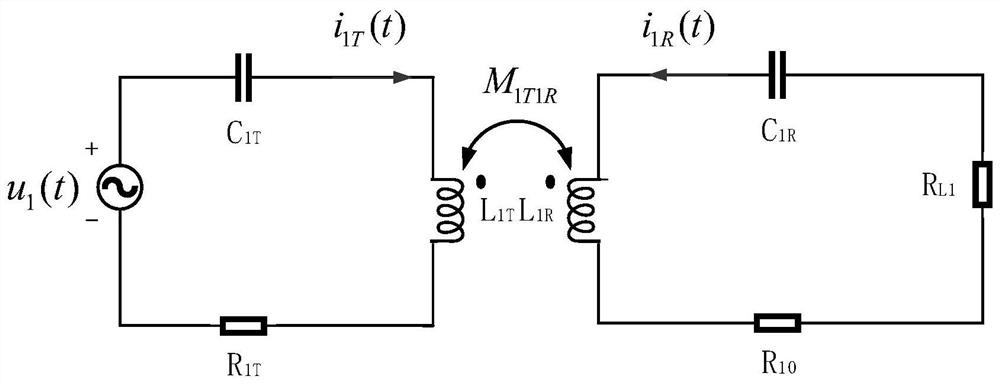Voltage injection decoupling control method for modular wireless charging system
A technology of wireless charging and voltage injection, applied in charging stations, battery circuit devices, electric vehicle charging technology, etc., can solve problems such as output control, and achieve the effect of eliminating mutual coupling
- Summary
- Abstract
- Description
- Claims
- Application Information
AI Technical Summary
Problems solved by technology
Method used
Image
Examples
Embodiment Construction
[0022] The technical scheme of the present invention is explained below with specific examples:
[0023] Taking the wireless charging system with two modules as an example to illustrate and explain the present invention, it is finally extended to an infinite multi-module system.
[0024] theoretical derivation
[0025] Firstly, the traditional single-channel wireless charging system is analyzed, and the fundamental equivalent circuit is as follows: figure 1 shown. The circuit voltage equation can be listed:
[0026]
[0027]
[0028]
[0029]
[0030] L 1T with L 1R Represents the self-inductance of the transmitting and receiving coils, C 1T with C 1R Indicates the compensation capacitance of the primary side and the secondary side, R 1T Indicates the parasitic resistance of the primary side, R 1R Indicates the sum of the equivalent load resistance of the secondary side and the parasitic resistance of the secondary side, M i(j)Tj(i)R , i, j∈[1,n], i≠j, re...
PUM
 Login to View More
Login to View More Abstract
Description
Claims
Application Information
 Login to View More
Login to View More - R&D Engineer
- R&D Manager
- IP Professional
- Industry Leading Data Capabilities
- Powerful AI technology
- Patent DNA Extraction
Browse by: Latest US Patents, China's latest patents, Technical Efficacy Thesaurus, Application Domain, Technology Topic, Popular Technical Reports.
© 2024 PatSnap. All rights reserved.Legal|Privacy policy|Modern Slavery Act Transparency Statement|Sitemap|About US| Contact US: help@patsnap.com










